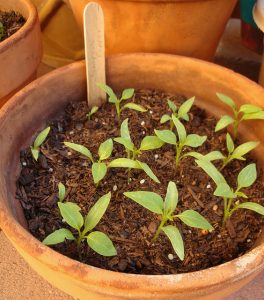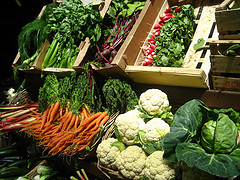 The winter is a great time to redesign your garden. Not only are you not currently growing anything – unless you live in a very warm, tropical climate – but you are also planning which fruits and vegetables to plant this year. While you are making your choices and starting your seedlings, take the time to determine the configuration of your garden. You do not need to be an expert, or even hire one, to plan a very functional and attractive backyard garden.
The winter is a great time to redesign your garden. Not only are you not currently growing anything – unless you live in a very warm, tropical climate – but you are also planning which fruits and vegetables to plant this year. While you are making your choices and starting your seedlings, take the time to determine the configuration of your garden. You do not need to be an expert, or even hire one, to plan a very functional and attractive backyard garden.
When it comes to garden design, there are several different things to consider. Start by sitting down and following these steps:
- What worked in your last garden? What did not? Is there something that you would have done differently, or wished that you had easier access to?
- Make a list of what you want to plant this year. Consider the estimated height of each plant, and where your garden is located in your backyard.
- Do you want to (or have the time to) completely overhaul your backyard to make more space for your garden or to change the configuration of it?
Once you have pondered these questions and jotted down the answers, it is time to come up with a plan of action. If you intend to completely switch around your garden, consider these options:
A Square Foot Garden
This is a good way to keep a smaller vegetable garden well-organized. A traditional square foot garden involves building the soil up. Place a series of wooden boards in a large square or rectangle and partially bury them in the soil. Empty several bags of soil into the space, before measuring out the footage in both directions and marking each foot. Hammer a nail into the marks, and then run string between the nails until you have each square foot delineated. Plan your garden accordingly, so that there are different varieties of fruits or vegetables in each square. A great book on this is Square Foot Gardening by Mel Bartholomew.
A Container Garden
You can plant a container garden in conjunction with your standard, planted-in-the-dirt garden. This option works extremely well with smaller plants, like herbs, and some types of fruit. It is up to you whether or not you want to purchase matching containers, or simply use the ones that you currently own. Make sure that the vegetables that you plant in the containers will grow sufficiently in them, as some may need more space than a container will allow. Another reading option is The Vegetable Gardener’s Container Bible by Edward Smith.
No matter which option you choose – or even if you plan on sticking with a traditional garden without any fancy wooden boarders or containers – sketch out your design first. It does not have to be pretty – just good enough so that you know which plants will go where. If you have graph paper, feel free to use it. Do not forget to leave enough space for each plant to grow properly, and, if necessary, include a few paths so that you have room to maneuver and tend to your plants.
Planning out your garden ahead of time will help you determine how many seedlings of each plant to start and how many packets of seeds to purchase. It will also give you a more attractive, and most importantly, functional, vegetable garden.
Pic by Eileen Kane.






No comments yet.